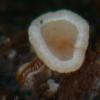
30-03-2010 03:16
Milanka TanaskovicBonjour à tous, Est-ce-que quelques-uns parmi vo

28-03-2010 18:43
 Nicolas VAN VOOREN
Nicolas VAN VOOREN
Il reste des places pour la session Ascomycètes,

27-03-2010 09:45
Bonjour à tous, Je suis à la recherche d'infor

25-03-2010 18:10
christian Deconchatil y a près d'un an, un message indiquait qu'à l

25-03-2010 18:10
christian Deconchatil y a près d'un an, un message indiquait qu'à l

24-03-2010 04:14
Roland LabbéBonjour ! Voici un autre Hymenoscyphus récolt�
Champignons sur Asplenium scolopendrium
Milanka Tanaskovic,
30-03-2010 03:16
Est-ce-que quelques-uns parmi vous possède une documentation sur les petits asco (0,2 – 0,8 mm Ø) qui se développe en ce moment à la face supérieure des frondes morte mais encore sur pied d’Asplenium scolopendrium (telle Woldmaria filicina sur Matteucia struthiopteris) à apothécies stipitée, de couleur blanche au départ puis jaune et rose-saumonée à la fin ?
Ma station se situe devant l’entrée d’une ancienne carrière d’extraction de pierres à Bonneuil-en-Valois (Oise).
Merci d’avance
Mila
Nicolas VAN VOOREN,
30-03-2010 08:06

Re:Champignons sur Asplenium scolopendrium
Peut-être Psilachnum chrysostigmum var. versicolor...
Luc Bailly,
30-03-2010 12:19
Milanka Tanaskovic,
30-03-2010 12:26
Re:Champignons sur Asplenium scolopendrium
Merci Nicolas,
Effectivement mon champignon ressemble beaucoup à P. chrysostigmum. Je vais approfondir la microscopie.
Mila
Effectivement mon champignon ressemble beaucoup à P. chrysostigmum. Je vais approfondir la microscopie.
Mila
Milanka Tanaskovic,
30-03-2010 12:39
Re:Champignons sur Asplenium scolopendrium
Merci à Luc aussi,
C’est tout à fait sa avec des couleurs en plus du blanc.
Je n’ai pas pensé à regarder dans le CD de Baral.
Mila
C’est tout à fait sa avec des couleurs en plus du blanc.
Je n’ai pas pensé à regarder dans le CD de Baral.
Mila


